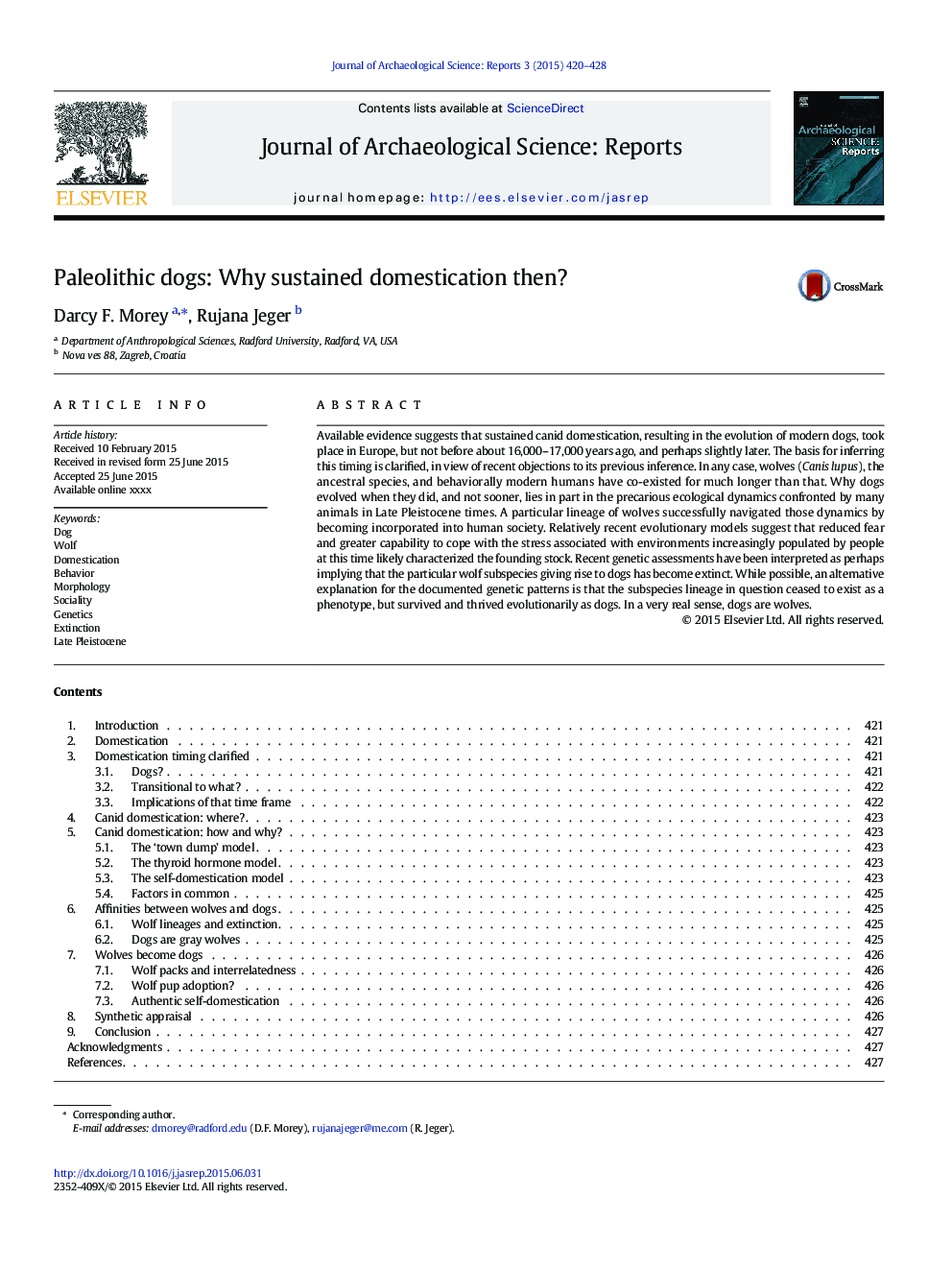| کد مقاله | کد نشریه | سال انتشار | مقاله انگلیسی | نسخه تمام متن |
|---|---|---|---|---|
| 7446566 | 1483940 | 2015 | 9 صفحه PDF | دانلود رایگان |
عنوان انگلیسی مقاله ISI
Paleolithic dogs: Why sustained domestication then?
ترجمه فارسی عنوان
سگهای پالئولیتی: چرا پس زدن پایدار؟
دانلود مقاله + سفارش ترجمه
دانلود مقاله ISI انگلیسی
رایگان برای ایرانیان
کلمات کلیدی
سگ، گرگ، تنفس رفتار - اخلاق، مرفولوژی، اجتماعی بودن، ژنتیک، انقراض، پالیستوسن بعدا،
موضوعات مرتبط
علوم انسانی و اجتماعی
علوم انسانی و هنر
تاریخ
چکیده انگلیسی
Available evidence suggests that sustained canid domestication, resulting in the evolution of modern dogs, took place in Europe, but not before about 16,000-17,000Â years ago, and perhaps slightly later. The basis for inferring this timing is clarified, in view of recent objections to its previous inference. In any case, wolves (Canis lupus), the ancestral species, and behaviorally modern humans have co-existed for much longer than that. Why dogs evolved when they did, and not sooner, lies in part in the precarious ecological dynamics confronted by many animals in Late Pleistocene times. A particular lineage of wolves successfully navigated those dynamics by becoming incorporated into human society. Relatively recent evolutionary models suggest that reduced fear and greater capability to cope with the stress associated with environments increasingly populated by people at this time likely characterized the founding stock. Recent genetic assessments have been interpreted as perhaps implying that the particular wolf subspecies giving rise to dogs has become extinct. While possible, an alternative explanation for the documented genetic patterns is that the subspecies lineage in question ceased to exist as a phenotype, but survived and thrived evolutionarily as dogs. In a very real sense, dogs are wolves.
ناشر
Database: Elsevier - ScienceDirect (ساینس دایرکت)
Journal: Journal of Archaeological Science: Reports - Volume 3, September 2015, Pages 420-428
Journal: Journal of Archaeological Science: Reports - Volume 3, September 2015, Pages 420-428
نویسندگان
Darcy F. Morey, Rujana Jeger,
